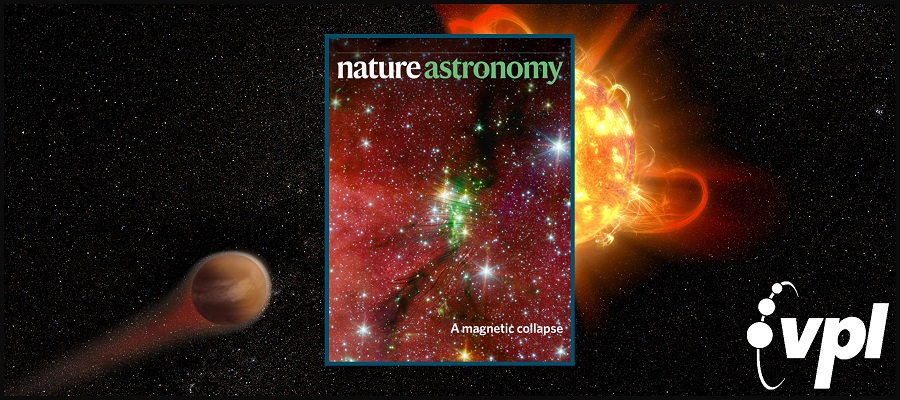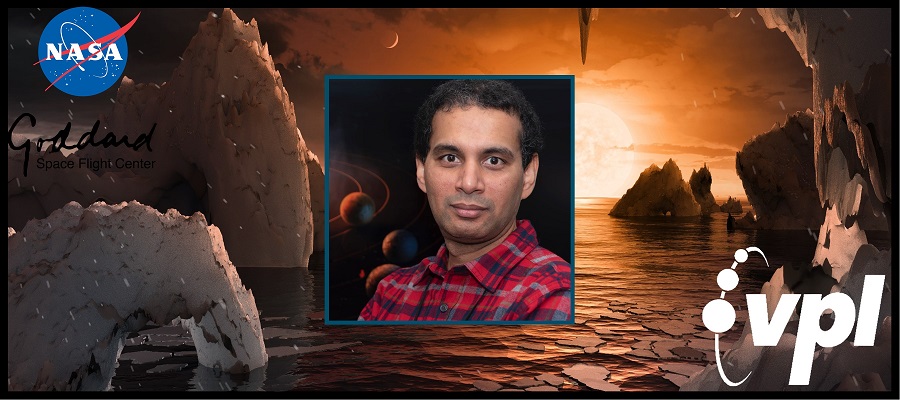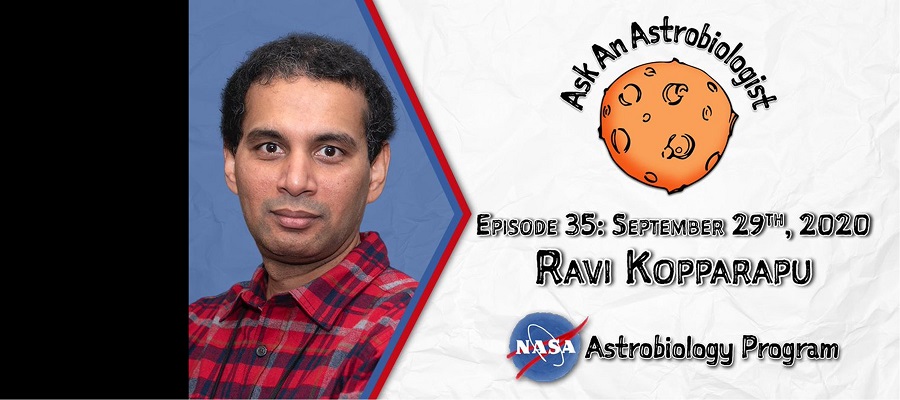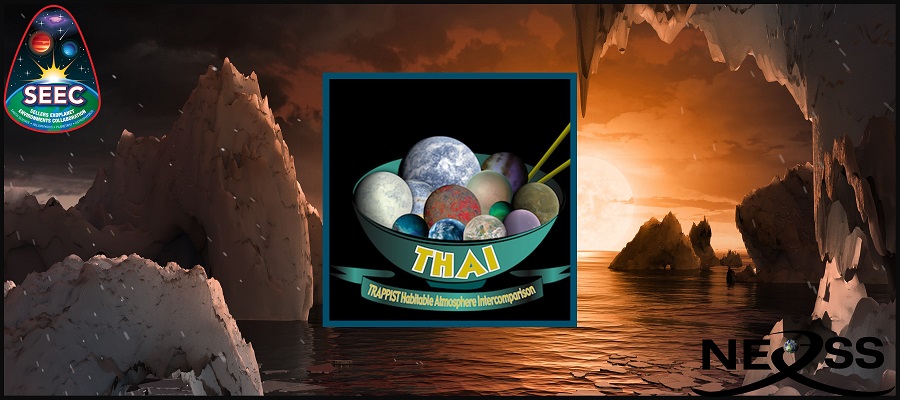The observation of a 266.94 GHz feature in the Venus spectrum has been attributed to phosphine (PH3) in the Venus clouds, suggesting unexpected geological, chemical, or even biological processes. Since both PH3 and sulfur dioxide (SO2) are spectrally active near 266.94 GHz, the contribution to this line from SO2 must be determined before it can be attributed, in whole or part, to PH3. An undetected SO2 reference line, interpreted as an unexpectedly low SO2 abundance, suggested that the 266.94 GHz feature could be attributed primarily to PH3. However, the low SO2 and the inference that PH3 was in the cloud deck posed an apparent contradiction. Here we use a radiative transfer model to analyze the PH3 discovery, and explore the detectability of different vertical distributions of PH3 and SO2. We find that the 266.94 GHz line does not originate in the clouds, but above 80 km in the Venus mesosphere. This level of line formation is inconsistent with chemical modeling that assumes generation of PH3 in the Venus clouds. Given the extremely short chemical lifetime of PH3 in the Venus mesosphere, an implausibly high source flux would be needed to maintain the observed value of 20 ± 10 ppb. We find that typical Venus SO2 vertical distributions and abundances fit the JCMT 266.94 GHz feature, and the resulting SO2 reference line at 267.54 GHz would have remained undetectable in the ALMA data due to line dilution. We conclude that nominal mesospheric SO2 is a more plausible explanation for the JCMT and ALMA data than PH3.
UWAB faculty member Eric Agol and Program Director Victoria Meadows were recently interviewed by Phil LaMarr with the Universe Unplugged:…
The evolution of a single raindrop falling below a cloud is governed by fluid dynamics and thermodynamics fundamentally transferable to planetary atmospheres beyond modern Earth’s. Here, we show how three properties that characterize falling raindrops — raindrop shape, terminal velocity, and evaporation rate — can be calculated as a function of raindrop size in any planetary atmosphere. We demonstrate that these simple, interrelated characteristics tightly bound the possible size range of raindrops in a given atmosphere, independently of poorly understood growth mechanisms. Starting from the equations governing raindrop falling and evaporation, we demonstrate that raindrop ability to vertically transport latent heat and condensible mass can be well captured by a new dimensionless number. Our results have implications for precipitation efficiency, convective storm dynamics, and rainfall rates, which are properties of interest for understanding planetary radiative balance and (in the case of terrestrial planets) rainfall-driven surface erosion.
Variation in the balance of forces that drive and resist tectonic plate motions allows small terrestrial planet to cooler slower than larger ones. Given that interior cooling affects surface environment, through volcanic/geologic activity, this indicates that small planets should not be down-weighted in the search for life beyond Earth.
Recently published Atacama Large Millimeter Array (ALMA) observations suggest the presence of 20 ppb PH3 in the upper clouds of Venus. This is an unexpected result, as PH3 does not have a readily apparent source and should be rapidly photochemically destroyed according to our current understanding of Venus atmospheric chemistry. While the reported PH3 spectral line at 266.94 GHz is nearly colocated with an SO2 spectral line, the nondetection of stronger SO2 lines in the wideband ALMA data is used to rule out SO2 as the origin of the feature. We present a reassessment of wideband and narrowband data sets derived from these ALMA observations. The ALMA observations are re-reduced following both the initial and revised calibration procedures discussed by the authors of the original study. We also investigate the phenomenon of apparent spectral line dilution over varying spatial scales resulting from the ALMA antenna configuration. A 266.94 GHz spectral feature is apparent in the narrowband data using the initial calibration procedures, but this same feature cannot be identified following calibration revisions. The feature is also not reproduced in the wideband data. While the SO2 spectral line is not observed at 257.54 GHz in the ALMA wideband data, our dilution simulations suggest that SO2 abundances greater than the previously suggested 10 ppb limit would also not be detected by ALMA. Additional millimeter, submillimeter, and infrared observations of Venus should be undertaken to further investigate the possibility of PH3 in the Venus atmosphere.
Low-mass stars show evidence of vigorous magnetic activity in the form of large flares and coronal mass ejections. Such space weather events may have important ramifications for the habitability and observational fingerprints of exoplanetary atmospheres. Here, using a suite of three-dimensional coupled chemistry–climate model simulations, we explore effects of time-dependent stellar activity on rocky planet atmospheres orbiting G, K and M dwarf stars. We employ observed data from the MUSCLES campaign and the Transiting Exoplanet Survey Satellite and test a range of rotation period, magnetic field strength and flare frequency assumptions. We find that recurring flares drive the atmospheres of planets around K and M dwarfs into chemical equilibria that substantially deviate from their pre-flare regimes, whereas the atmospheres of G dwarf planets quickly return to their baseline states. Interestingly, simulated O2-poor and O2-rich atmospheres experiencing flares produce similar mesospheric nitric oxide abundances, suggesting that stellar flares can highlight otherwise undetectable chemical species. Applying a radiative transfer model to our chemistry–climate model results, we find that flare-driven transmission features of bio-indicating chemical species, such as nitrogen dioxide, nitrous oxide and nitric acid, show particular promise for detection by future instruments.
Dr. Michael Wong was interviewed by the Nexus for Exoplanet System Science (NExSS) Science Communication Working Group to be featured…
Variations in the reflective properties of the bulk material that comprises the surface of land-dominated planets will affect the planetary energy balance by interacting differently with incident radiation from the host star. Furthermore, low-mass cool stars, such as nearby M8V dwarf TRAPPIST-1, emit a significant fraction of their flux in longer wavelengths relative to the Sun in regions where terrestrial materials may exhibit additional variability in albedo. Using the Community Earth System Model, we investigate the effect of the composition of the land surface and its albedo on planetary climate in the context of spatially homogeneous, entirely land-covered planets with dry atmospheres at the orbital separation of TRAPPIST-1d, TRAPPIST-1e, and TRAPPIST-1f. We use empirically derived spectra of four terrestrial compositional endmembers (granite, calcite, aridisol, and dune sand) and a composite spectrum of TRAPPIST-1 for these simulations and compare these model outputs to an aquaplanet and several Sol-spectrum control cases. We report a difference of approximately 50 K in global mean surface temperature, variations in atmospheric rotational features, and a reduction in cross-equatorial heat transport between scenarios in which materials with higher albedo in the infrared (calcite and dune sand) were used and those with more absorptive crustal material, such as granite or dry soils. An aquaplanet TRAPPIST-1d scenario results in an unstable runaway greenhouse regime. Therefore, we demonstrate that determining the composition and albedo of continental landmasses is crucial for making accurate determinations of the climate of terrestrial exoplanets.
We simulate the coupled stellar and tidal evolution of short-period binary stars (orbital period $P_{orb} lsim$8 days) to investigate the orbital oscillations, instellation cycles, and orbital stability of circumbinary planets (CBPs). We consider two tidal models and show that both predict an outward-then-inward evolution of the binary’s semi-major axis abin and eccentricity ebin. This orbital evolution drives a similar evolution of the minimum CBP semi-major axis for orbital stability. By expanding on previous models to include the evolution of the mass concentration, we show that the maximum in the CBP orbital stability limit tends to occur 100 Myr after the planets form, a factor of 100 longer than previous investigations. This result provides further support for the hypothesis that the early stellar-tidal evolution of binary stars has removed CBPs from short-period binaries. We then apply the models to Kepler-47 b, a CBP orbiting close to its host stars’ stability limit, to show that if the binary’s initial $e_{bin} gsim$0.24, the planet would have been orbiting within the instability zone in the past and probably wouldn’t have survived. For stable, hypothetical cases in which the stability limit does not reach a planet’s orbit, we find that the amplitudes of abin and ebin oscillations can damp by up to 10% and 50%, respectively. Finally, we consider equal-mass stars with Porb= 7.5 days and compare the HZ to the stability limit. We find that for stellar masses $lsim0.12M_{odot}$, the HZ is completely unstable, even if the binary orbit is circular. For $e_{bin} lsim$0.5, that limit increases to 0.17M?, and the HZ is partially destabilized for stellar masses up to 0.45M?. These results may help guide searches for potentially habitable CBPs, as well as characterize their evolution and likelihood to support life after they are found.
VPL scientist Dr. Ravi Kopparapu was recently awarded the NASA Exceptional Scientific Achievement Medal! NASA states: “This prestigious NASA medal…
VPL Scientist Dr. Ravi Kopparapu (NASA GSFC) was recently featured on the Ask an Astrobiologist program! Dr. Ravi Kopparapu is…
The NASA Nexus for Exoplanet Systems Science (NExSS) and Sellers Exoplanet Environments Collaboration recently hosted the TRAPPIST Habitable Atmospheres Intercomparison…
Here we use a 3‐D climate system model to study the habitability of Earth‐like planets orbiting in circumbinary systems. In the most extreme cases, Earth‐like planets in circumbinary systems could experience variations in the incident stellar flux of up to ~50% on ~100‐day timescales. However, we find that Earth‐like planets, having abundant surface liquid water, are generally effective at buffering against these time‐dependent changes in the stellar irradiation due to the high thermal inertia of oceans compared with the relatively short periods of circumbinary‐driven variations in the received stellar flux.
Are we alone in the universe? How did life arise on our planet? How do we search for life beyond…
Exoplanet discoveries have reached into the realm of terrestrial planets that are becoming the subject of atmospheric studies. One such discovery is LHS 3844b, a 1.3 Earth radius planet in a 0.46 day orbit around an M4.5-5 dwarf star. Follow-up observations indicate that the planet is largely devoid of substantial atmosphere. This lack of significant atmosphere places astrophysical and geophysical constraints on LHS 3844b, primarily the degree of volatile outgassing and the rate of atmosphere erosion. We estimate the age of the host star as 7.8 ± 1.6 Gyr and find evidence of an active past comparable to that of Proxima Centauri
VPL Scientist Dr. Jacob Haqq-Misra (BMSIS) was recently featured on the Ask an Astrobiologist program! You can watch a recording…
We present a study of the photochemistry of abiotic habitable planets with anoxic CO2–N2 atmospheres. Such worlds are representative of early Earth, Mars, and Venus and analogous exoplanets. Photodissociation of H2O controls the atmospheric photochemistry of these worlds through production of reactive OH, which dominates the removal of atmospheric trace gases.
We report on the validation of two planets orbiting the nearby (36pc) M2 dwarf TOI-1266 observed by the TESS mission. The inner planet is sub-Neptune-sized (R=2.46±0.08R⊕) with an orbital period of 10.9 days. The outer planet has a radius of 1.67+0.09−0.11R⊕ and resides in the exoplanet Radius Valley—the transition region between rocky and gaseous planets. With an orbital period of 18.8 days, the outer planet receives an insolation flux of 2.4 times that of Earth, similar to the insolation of Venus.
The development of astrobiology, the study of life in the universe, is intimately tied to the development of spaceflight in the mid to late twentieth century, which enabled the discovery and exploration of non-Earth environments that might harbor life. In 1976, the Viking missions to Mars supported a core goal to search for signs of life beyond Earth (Klein et al., 1972). However, the Viking life detection experiments provided inconclusive evidence of organics and life (e.g., Klein, 1979; Biemann, 1979; Quinn et al., 2013), a result that put a damper on both Mars exploration and exobiology (as astrobiology was known…
Astrobiology is intended to be the science of life in the cosmos. When fully developed it will encompass the origins of life and all of lifes manifestations in the full variety of astrophysical environments in which it will be found. It is a big picture, but with one exception it is all future conditional. This is why one begins a book on planetary astrobiology with Earth: Earth is our only known role model for how to succeed in the cosmos. This chapter explores the processes involved in planet formation and which of them may play important roles in establishing the…
Are we alone in the universe? How did life arise on our planet? How do we search for life beyond Earth? These profound questions excite and intrigue broad cross sections of science and society. Answering these questions is the province of the emerging, strongly interdisciplinary field of astrobiology. Life is inextricably tied to the formation, chemistry, and evolution of its host world, and multidisciplinary studies of solar system worlds can provide key insights into processes that govern planetary habitability, informing the search for life in our solar system and beyond. Planetary Astrobiology brings together current knowledge across astronomy, biology, geology, physics, chemistry, and related fields, and considers the synergies between studies of solar systems and exoplanets to identify the path needed to advance the exploration of these profound questions.
Planetary Astrobiology represents the combined efforts of more than seventy-five international experts consolidated into twenty chapters and provides an accessible, interdisciplinary gateway for new students and seasoned researchers who wish to learn more about this expanding field. Readers are brought to the frontiers of knowledge in astrobiology via results from the exploration of our own solar system and exoplanetary systems. The overarching goal of Planetary Astrobiology is to enhance and broaden the development of an interdisciplinary approach across the astrobiology, planetary science, and exoplanet communities, enabling a new era of comparative planetology that encompasses conditions and processes for the emergence, evolution, and detection of life.







